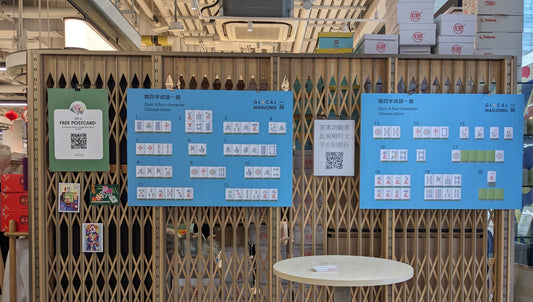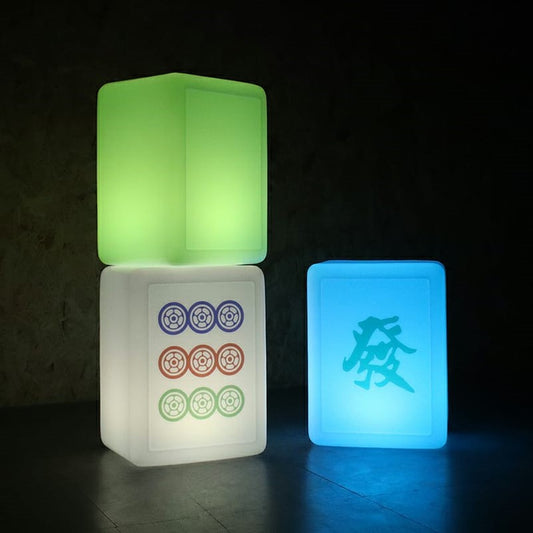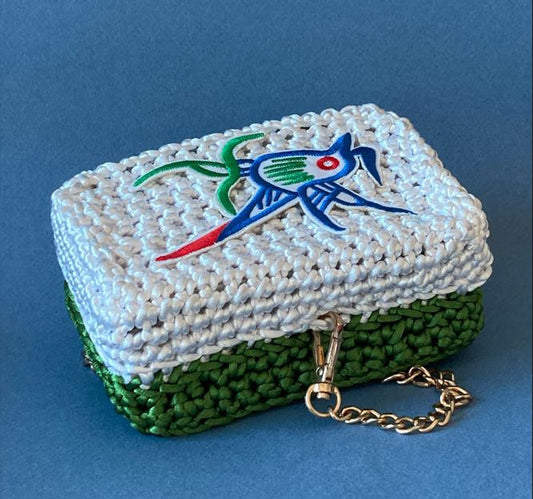Mahjong x Number
Mahjong is a game of numbers. Players try to match three or four tiles of the same number or three numbers in a sequence of the same suit. Numbers from the dice determine who is the dealer and how tiles are drawn from the beginning. The four winds East, South, West and North are used to count the numbers one to four from the dealer’s location while the season and flowers tiles with the index numbers from one to four give a special bonus related to a similar counting from the dealer’s seat.
The numbers one to nine of the three suits are represented in two ways. The dot and stick suits use the counting system to tell numbers by displaying the quantity of an element while the 萬suits use numerals, the semiotic symbols to represent numbers.
One theory says that the three suits are actually units in ascending quantity. The Dot suit’s circles represent the smallest unit of perforated coins. The Bamboo suit’s strokes represent the strings that run through a collection of coins while the 萬 of the character suit is the Chinese numeral for ten thousand which could be the numbers for certain strings of coins. In different civilizations, counting and numerals are the two main streams in the representation of numbers. Babylonian, Egyptian and Mayan used the counting system while Hebrew, Greek, Roman, Modern Arabic and the one we call Arabic numerals that are used worldwide today are all semiotic. Chinese actually got both in the form of rods as well as scripts.
Before we move on, I would like to share some interesting facts about the numbering system we used today. Despite it being called Arabic numerals, its origin and spread have nothing to do with Arabic. It actually came from the Indian Hindu language. It was Al Khwarizmi, possibly a Persian, but definitely not an Arabian, who adopted the Hindu numerals for his calculation method Al-Jabr, which we know as Algebra today.
Apart from simple counting numbers, mahjong also involves Arithmetic and Mathematics.
Despite there may be regional variations in places like Taiwan, most mahjong is played with an initial hand of 13 tiles and the players collect the last one to make up a winning hand of 14 through a process of drawing, matching and discarding, which is the sum of four sets of three tiles plus two eyes. As explained in other videos under our Mahjong 101 series, by chance the numbers 13 and 14 have special meanings in Chinese and Western culture.
By chance, these two numbers have special meanings in Chinese and Western culture.
13 in Chinese is十三which sounds like “sure alive” 十生. It is a good number but for Westerners, it is considered an unlucky number.
But to the opposite, 14 in Chinese十四which sounds like “Sure die” 十死 which is unlucky. That is why you see some buildings skip this in numbering the floors. ||
Apart from simple addition, it also involves multiplication. As explained earlier in the episode on the magic of 4, mahjong always comes in a total number that is a multiple of 4, even though there may be regional differences in the exact number.
Apart from the simple addition involved in making up a winning hand, the exponential function is used in calculating how much one win. The term,番 practically means doubling the number of winning points or chips for a particular winning hand along an ascending scale of difficulties or descending scale of chances.
Smart mahjong players are often those good at assessing the chances, or in mathematic terms, the probability of getting their wanted tiles. These smart players will keep a close eye on all the discarded tiles in the central pool as well as the tiles collected and exposed through pong or chow. They will also guess what hands are being made by other players and the risk of discarding a tile that other players will claim to win, which could cause him to lose double. The mathematics involved is so deep as a subject for mathematicians to write scholarly research papers on it.
So that is why, from my experience, people who are smart and good at maths love the game. And I believe it is not solely a coincidence that the game is very much liked by Chinese, Japanese and Jewish Americans.
In the world league, Japanese mahjong is adopted as the standard game to be played as relatively, it involves less luck element. On the other extreme, when people use mahjong to gamble, like in a gambling mahjong club or 麻雀館 in Hong Kong, the rules are changed to play down the importance of skill in favour of total luck. Mahjong as a game to compete like a tournament or a sport versus that as a game for gambling could be the subject of another episode in future.



